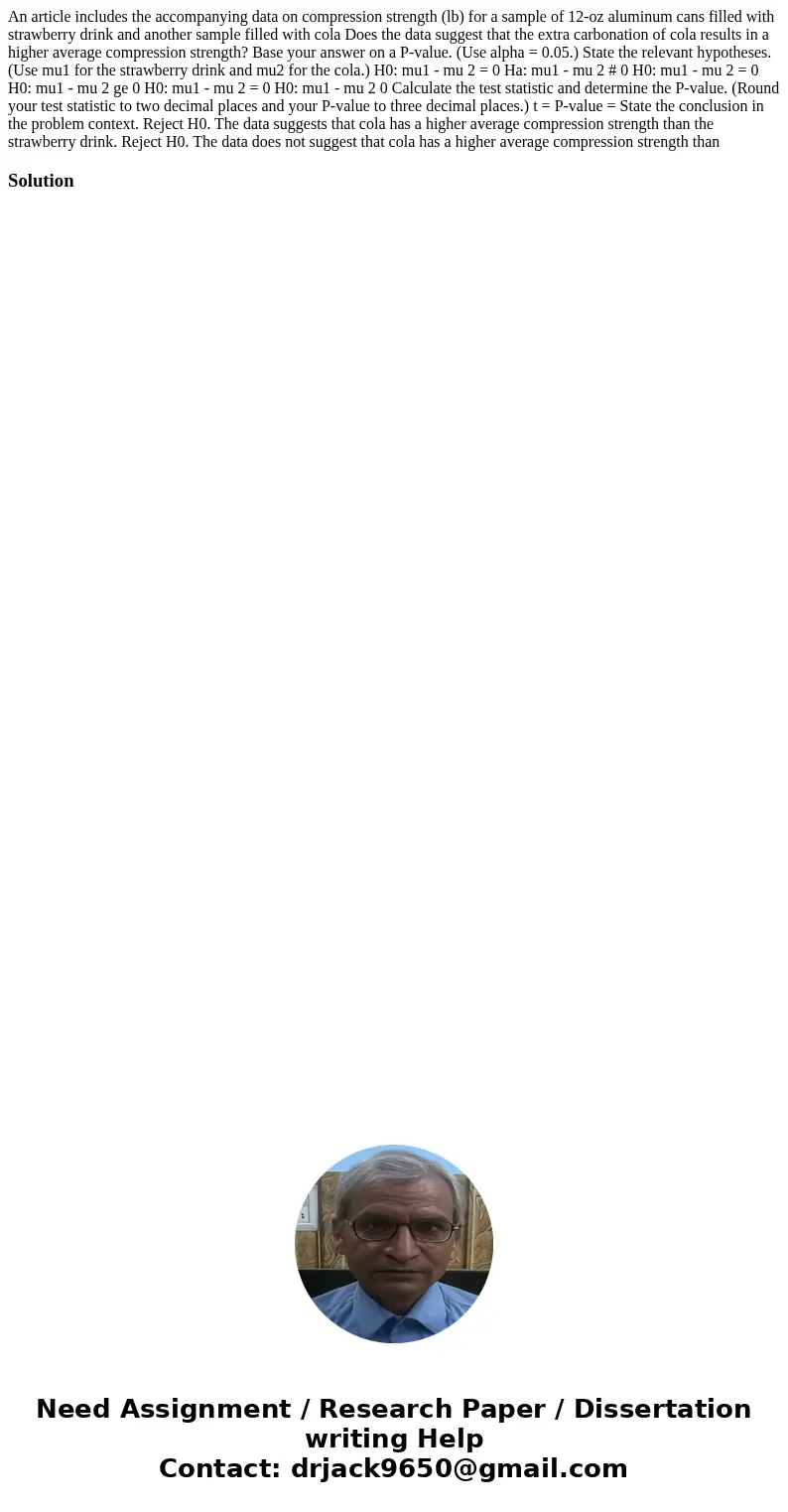An article includes the accompanying data on compression str
An article includes the accompanying data on compression strength (lb) for a sample of 12-oz aluminum cans filled with strawberry drink and another sample filled with cola Does the data suggest that the extra carbonation of cola results in a higher average compression strength? Base your answer on a P-value. (Use alpha = 0.05.) State the relevant hypotheses. (Use mu1 for the strawberry drink and mu2 for the cola.) H0: mu1 - mu 2 = 0 Ha: mu1 - mu 2 # 0 H0: mu1 - mu 2 = 0 H0: mu1 - mu 2 ge 0 H0: mu1 - mu 2 = 0 H0: mu1 - mu 2 0 Calculate the test statistic and determine the P-value. (Round your test statistic to two decimal places and your P-value to three decimal places.) t = P-value = State the conclusion in the problem context. Reject H0. The data suggests that cola has a higher average compression strength than the strawberry drink. Reject H0. The data does not suggest that cola has a higher average compression strength than
Solution

 Homework Sourse
Homework Sourse